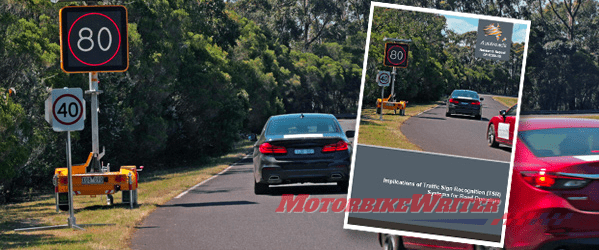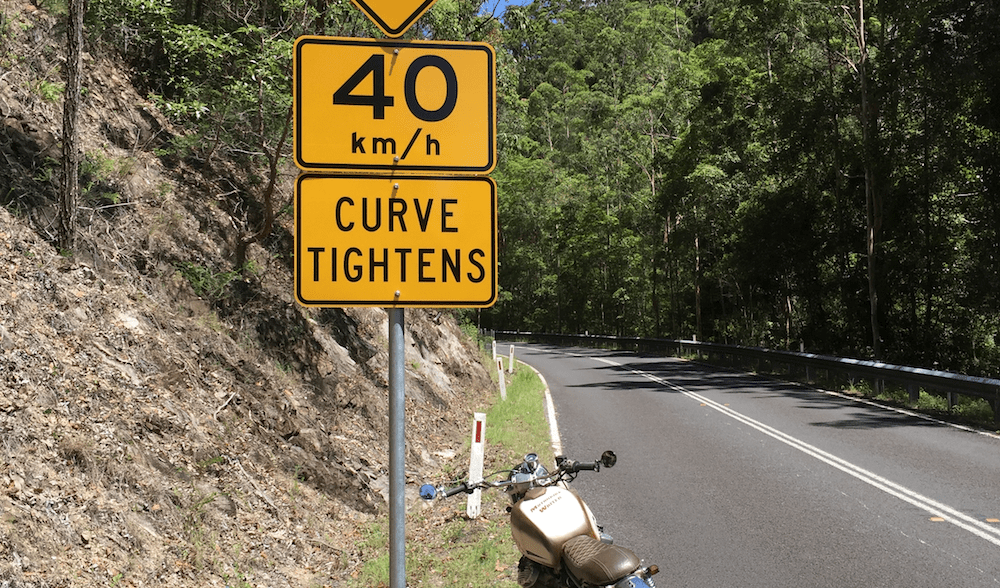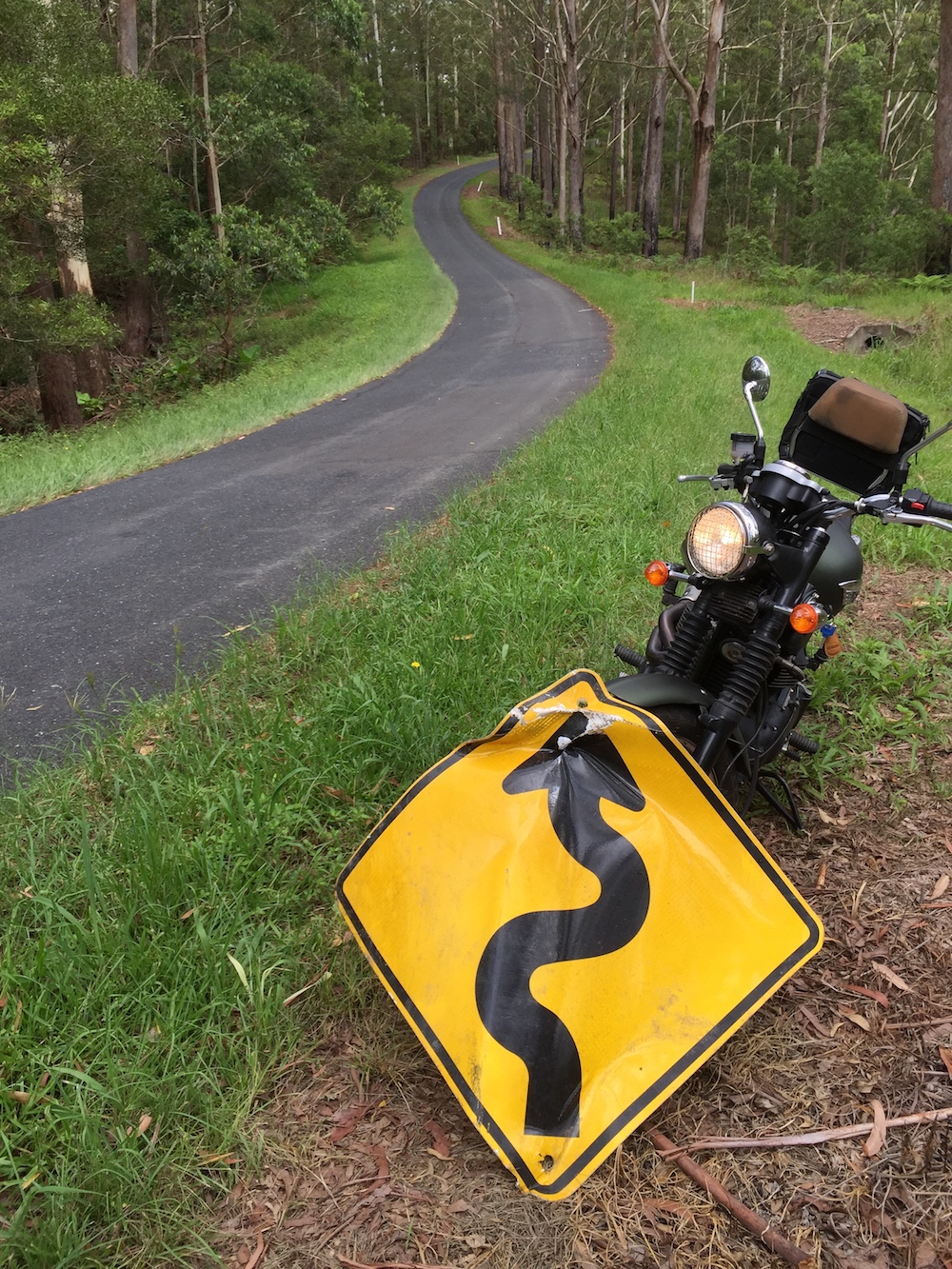Future motorcycles and other vehicles may have sensors that read roadside speed limit signs and electronically intervene to limit the vehicle’s speed.
Traffic Sign Recognition (TSR) is already included in some luxury cars and could soon be more widespread as automated cars, buses, trucks and even motorcycles become available.
The technology uses sensors which “read” and interpret roadside traffic signs and govern the speed of automated vehicles to the posted speed limit.
Signs need changes

Austroads has published a report that says to cope with the demands of these automated vehicles with TSR technology, our roadside signs will have to be redesigned, well maintained and repositioned.
“Vehicle manufacturers are moving towards enabling speed assistance and automated driving using TSR systems and the benefits of successful introduction are likely to be significant for road safety,” the report says.
However, we can think of several scenarios where interventionist technology limiting your speed could be danger.
For example, if you commit to overtaking a vehicle which then speeds up, you could be left stranded on the wrong side of the road, unable to complete the overtaking manoeuvre.
Another example is a damaged sign. What would TSR make of signs in rural areas that have been used for target practice!
Sign trials 
Austroads conducted trials of TSR technology on signs on motorways and local roads in Melbourne, Sydney and Auckland.
While TSR is fast approaching, Austroads says there is still some work to be done to make them work properly.
It found that electronic signs could not be consistently read by TSR systems and current signs needed to be better placed.
Austroads also says databases of speed zones will supplement TSR systems.
The report recommends changes to enhance traffic sign readability on electronic signs, installation and maintenance, sign positioning and location, sign face design, vehicle-mounted signs, and other advisory and information signs.
As for positioning, we would hope they would move signs further from the road so they are not a hazard to riders and make them out of more flexible material.




